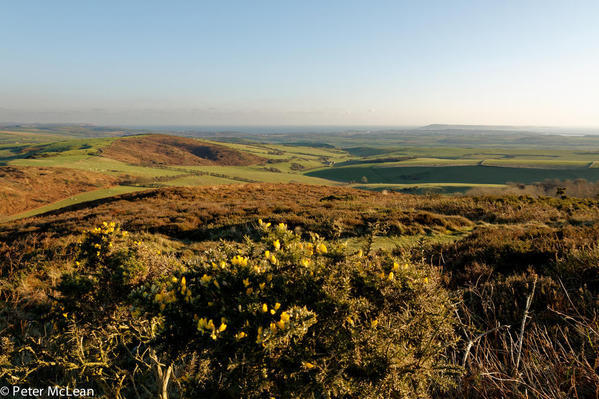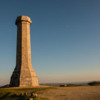Standing high above the Dorset coast, overlooking the town of Weymouth and the isle of Portland is "Hardy's Monument" built in 1845 on the highest point of Black Down. Sculpted in famous Portland stone from nearby quarries (as was St. Paul's Cathedral in London) this spot was also the site of a beacon to warn of the French Napoleonic invasion.
As Dorset has two "favourite sons" by the name of Hardy, both handily with the first name of Thomas, there is frequent confusion as to which son is being commemorated where...
In this case, it is Rear Admiral Sir Thomas Masterman Hardy (1769-1839) who was best known as the Captain of HMS Victory at the battle of Trafalgar (1805) where the combined French and Spanish fleets were beaten by a smaller British fleet but Admiral Nelson was mortally wounded. As Nelson lay dying he said the famous words "kiss me Hardy" whereupon Hardy kissed his friend on the forehead as he died.
Today this viewpoint gives a magnificent and beautiful view of the entire Weymouth and Lyme bays.





Comments (4)